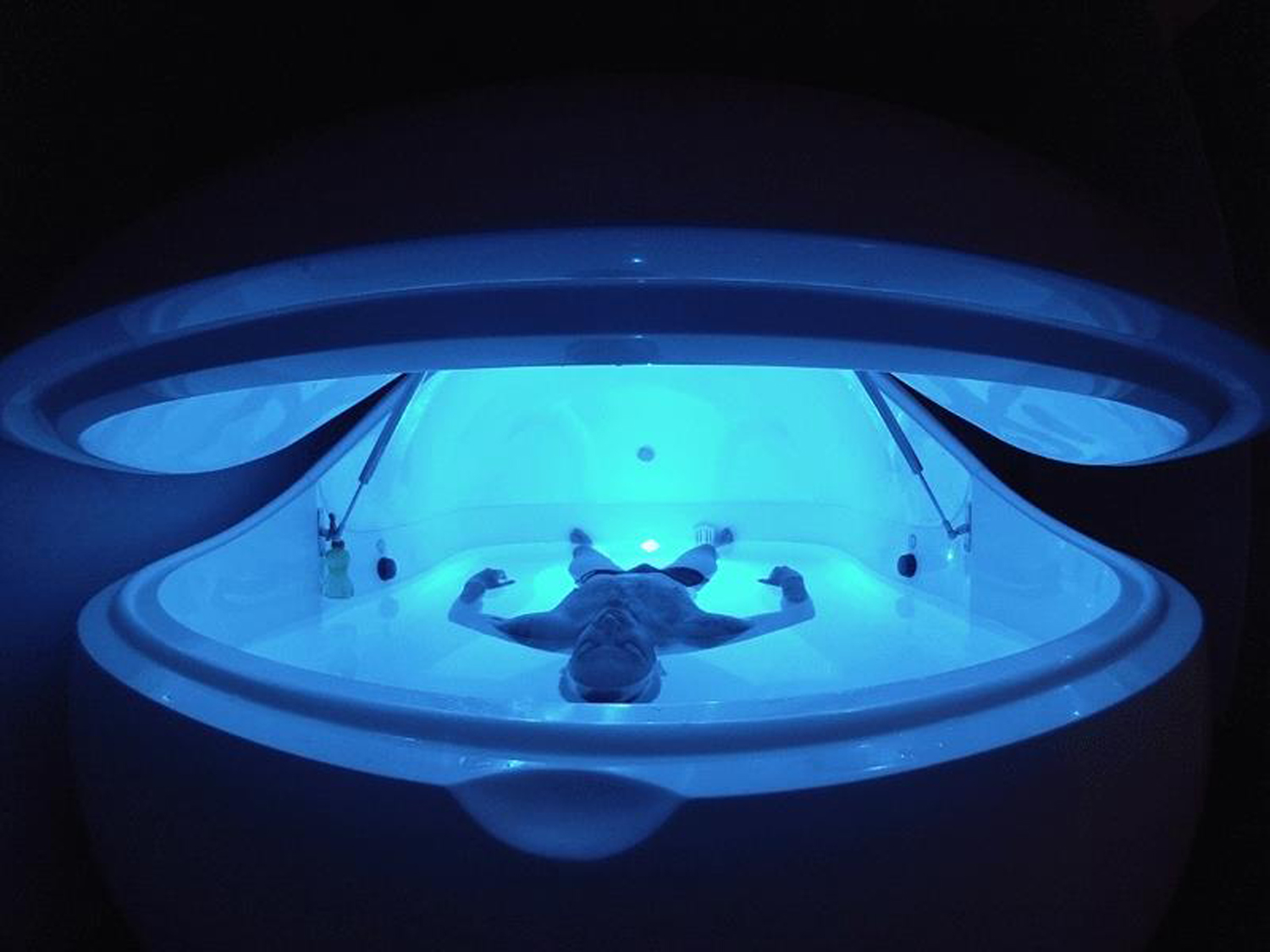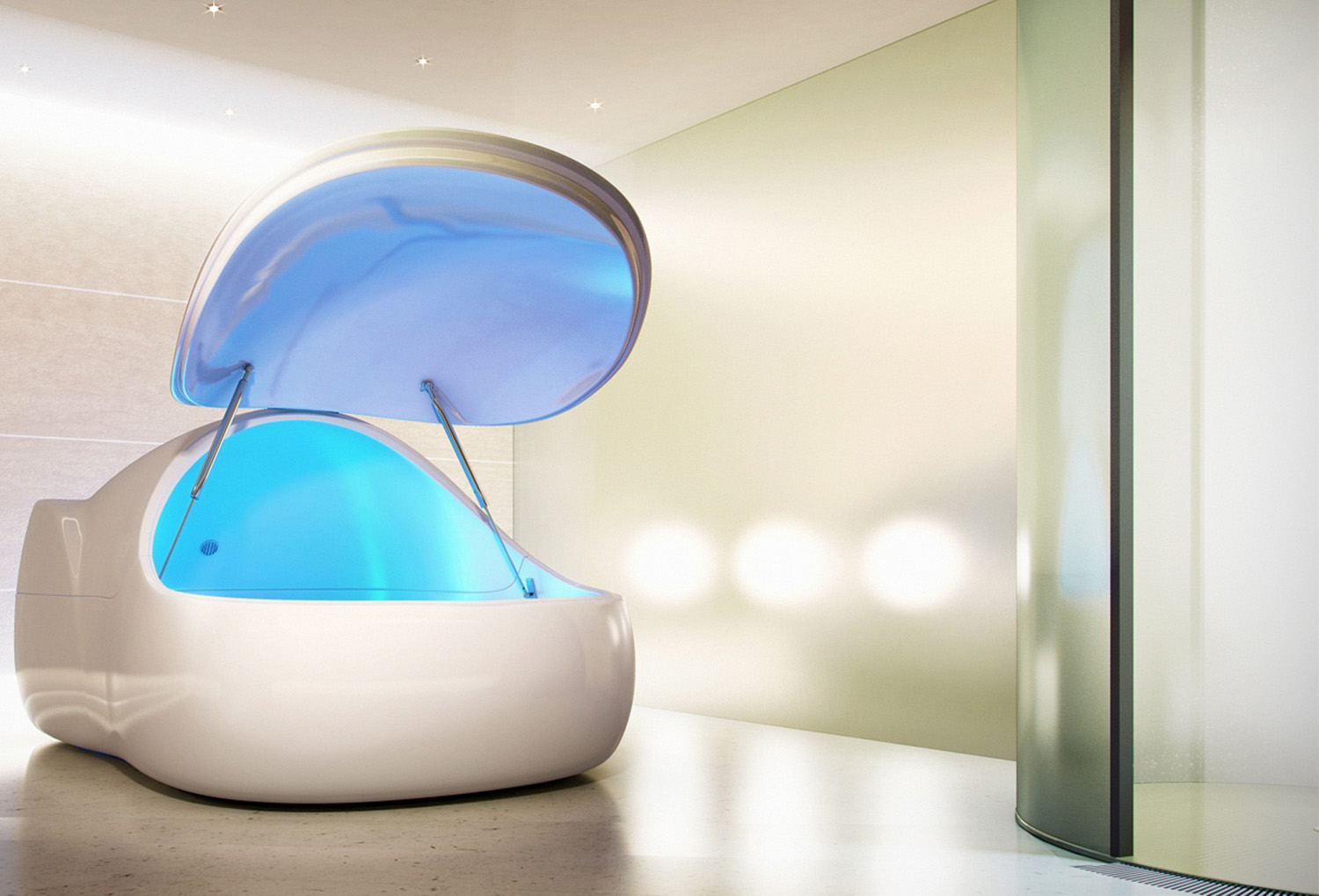There’s nothing more calming than ending a stressful day with a long soak in the bath, with a few candles plotted around the tub for good measure.
But a trendy type of new-age therapy is taking the calming wonders of floating away your cares to new extremes – by suspending its devotees in total darkness in a sealed pod of water.
It’s called floatation therapy and, according to a holistic school of thinking, it can do everything from help balance hormones and reduce stress, to aid recovery and alleviate insomnia.

It may sound and look like something from a science-fiction film, but with celebrity fans including Wayne Rooney, Gwyneth Paltrow and Elle Macpherson extolling its benefits, the concept has gone quasi-mainstream over here in the UK, with ‘floatation centres’ popping up across the country.
What exactly is floatation therapy?
Essentially, it’s a way of achieving deep relaxation, by spending an hour or more lying quietly in total silence and darkness. It enables you to submerse yourself into a lightless, soundproof tank (called an Isopod), lying flat on your back with your eyes closed.
The saline water inside is warmed to 35.5C, the same temperature as the air and your skin, so that you can’t quite tell where the air stops and the water begins.
The floating element is made easy with a secret trick: the water is filled with enough Epsom salts to keep the body gently suspended on its surface.
The idea is that while you bob in total darkness and silence, your brain is stripped of all sensory distractions. Many compare it to the experience of ‘floating in outer space’ – which can initially feel like an uncomfortable experience if you’re the type of person that’s used to checking their phone every 10 minutes, or juggling a busy schedule.
While the vast majority of us are probably still in the dark about this alternative therapy, it’s actually been around for decades and first cropped up in the Fifties (John Lennon even credited floatation therapy for helping him to kick his heroin habit in 1979).
In recent years though, it’s had a Millennial-friendly rebrand, moving away from being known as ‘sensory deprivation’ or ‘isolation’ therapy, to the rather less grisly-sounding ‘floatation therapy’.

What are the benefits?
There’s still limited scientific research into the healing powers of floatation therapy, but converts say it’s a cure-all method for a whole platter of health and wellbeing maladies.
“Floating creates a unique space for our brain and our body to switch off,” says Chris Plowman, founder and director of Floatworks, a floatation experience provider in London.
According to Plowman, his clients have reported everything from an increased sense of calm and clarity to improved sleep, reduced anxiety and stress, plus faster recovery from sporting injury.
On a physical level, floating is said to be able to help reduce muscle tension, pain, inflammation and blood pressure, thanks to an extra boost of all-important magnesium in the water.

The benefits can be spiritual too. All that disconnected floating works wonders if you’re looking to get your creative juices flowing (I’m told the tank is particularly good for writer’s block and other artistry mojo issues).
Plowman says the womb-like experience can even trigger hallucinations and out-of-body experiences for some people.
While it all sounds very alternative, it might just be that us Brits are behind with the times. It’s classed as a luxury holistic treatment here in the UK, but in Sweden, which has more than 120 float centres, floatation therapy is actually covered by their national health service.
So what does it actually feel like?
Lauren Taylor tried out an hour-long float at Floatworks, in Vauxhall, London (£50). Here’s how she got on…
“Being slightly claustrophobic, the idea of being closed into an isolated tank – in water, in the dark, and on my own – doesn’t exactly make me feel relaxed.
“Thankfully, the ever-so-Zen people at Floatworks instantly put my whirring thoughts at ease. After lowering myself into the pod, I’m told to turn off light once I feel comfortable, and then simply concentrate on breathing.
“Lying in water without having to make an effort to hold your head up – so as not to drown – is a completely alien feeling (unless you’ve been to the Dead Sea, where the water’s unusually high natural salt concentration has a similar effect). I have to admit, at first, when the pod lid closes and the meditation music stars, I find it difficult to let all my muscles relax.
“I’m surprised to notice some aches and pains in my upper back and neck as I acclimatise to the water. Owner Chris Plowman assures me this is normal, however, due to tension “coming to the surface and disappearing” as you float.
“So was I immediately put into a Zen-like trance? Not quite. It turns out, an hour is a pretty long time, particularly for the spa world, where time usually whizzes by quickly when you’re on the massage table. I feel like I spent a good 30 minutes willing myself to relax and attempting to find a comfortable position (I also probably shouldn’t admit that I got out of the pod to check my phone at one point).
“For the final 10 minutes though, I finally managed to switch off and drift away into a sort of meditative, almost-sleep state. And although, thankfully, I didn’t experience the vivid hallucinations that some people get from floatation therapy, I have to admit – I did feel far more chilled out than usual.”
